Best Go Programming Books to Buy in January 2026
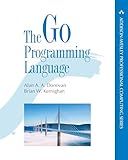
Go Programming Language, The (Addison-Wesley Professional Computing Series)


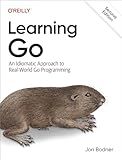
Learning Go: An Idiomatic Approach to Real-World Go Programming


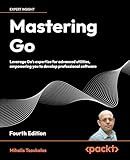
Mastering Go: Leverage Go's expertise for advanced utilities, empowering you to develop professional software



100 Go Mistakes and How to Avoid Them


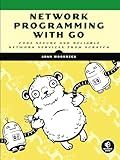
Network Programming with Go: Code Secure and Reliable Network Services from Scratch



Learn Concurrent Programming with Go


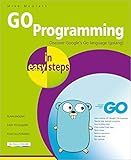
GO Programming in easy steps: Learn coding with Google's Go language


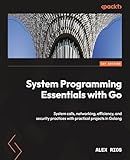
System Programming Essentials with Go: System calls, networking, efficiency, and security practices with practical projects in Golang



Head First Go


Tutorial: Migrating from Python to Go
Migrating from one programming language to another can be a challenging task, but it can also be an opportunity to learn and explore new possibilities. This tutorial aims to help Python developers who are interested in transitioning to Go, also known as Golang.
Go is a statically typed, compiled programming language created by Google. It was designed to be simple, efficient, and scalable, with built-in support for concurrency. Go has gained popularity for its ease of use, concurrency features, and strong performance characteristics.
Here are some key points to consider when migrating from Python to Go:
- Syntax Differences: Go has a C-style syntax that may feel unfamiliar to Python developers. It emphasizes readability and simplicity, with a focus on explicitness and minimalism. Go does not use semicolons as statement terminators. Instead, it relies on newlines and indentation, similar to Python. Go uses explicit type declarations, whereas Python employs dynamic typing.
- Multiple Return Values: Go supports multiple return values from functions, which is not a built-in feature in Python. This enables Go developers to write cleaner and more expressive code, simplifying error handling and reducing the need for exceptions.
- Concurrency: Go has built-in support for concurrency through goroutines and channels. Goroutines are lightweight threads, allowing for concurrent execution without incurring the overhead of operating system threads. Channels facilitate communication and synchronization between goroutines, providing a safe and efficient approach to concurrent programming.
- Performance: Go is known for its excellent performance characteristics, often outperforming dynamically typed languages like Python. Compared to a Python program, a well-written and optimized Go program can execute much faster and handle more simultaneous connections.
- Tooling and Ecosystem: Go has a robust tooling ecosystem, including a comprehensive standard library and numerous third-party packages. Popular development tools such as gofmt (code formatter) and goimports (import manager) promote consistent coding styles and ease integration with other code editors, IDEs, and build systems.
- Learning Resources: There are ample learning resources available for developers looking to migrate from Python to Go. The official Go website offers a wide range of documentation, tutorials, and examples to help you get started. Online communities, forums, and coding platforms provide support and guidance for Go developers, enabling you to ask questions and learn from experienced users.
Remember that migrating from one programming language to another requires not only learning the new syntax and tools but also adapting to a different mindset. It's essential to approach the migration process with patience and an eagerness to explore Go's unique features and capabilities.
By following this tutorial and seeking additional resources, you can make a smoother transition from Python to Go, taking advantage of Go's performance and concurrency abilities while expanding your programming skills.
What is the Go equivalent of Python's pip package manager?
The Go equivalent of Python's pip package manager is called "go get". It is a command-line tool used for fetching and installing packages from remote repositories. The "go get" command also handles package dependencies and updates.
How to handle data serialization and deserialization in Go?
In Go, you can handle data serialization and deserialization using the encoding/json package. This package provides functions to encode/decode JSON data.
To illustrate the process, here's an example of how to serialize and deserialize data in Go:
- Define a struct that represents the data you want to serialize or deserialize. For example, let's consider a Person struct:
type Person struct { Name string `json:"name"` Age int `json:"age"` }
- Serialization: Convert a Go data structure to a JSON-encoded byte array using the json.Marshal() function.
person := Person{Name: "Alice", Age: 30} jsonData, err := json.Marshal(person) if err != nil { // handle error }
- Deserialization: Convert a JSON-encoded byte array to a Go data structure using the json.Unmarshal() function.
var deserializedPerson Person err := json.Unmarshal(jsonData, &deserializedPerson) if err != nil { // handle error }
- You can now access the deserialized data structure:
fmt.Println(deserializedPerson.Name) // Output: "Alice" fmt.Println(deserializedPerson.Age) // Output: 30
Note:
- The struct field tags (e.g., json:"name") help in mapping the JSON key names to the struct field names.
- For deserialization, the target variable must be passed as a pointer to the json.Unmarshal() function.
- Custom field names and handling complex structures are also possible using this package.
Remember to handle errors appropriately during serialization and deserialization operations to ensure the data is handled correctly.
What is the difference between Python and Go in terms of syntax?
Python and Go are both popular programming languages, but they differ significantly when it comes to syntax. Here are some of the key differences:
- Indentation: Python uses significant whitespace to define code blocks, where indentation is crucial for determining the scope of blocks and statements. Go, on the other hand, uses braces ({}) for defining code blocks, similar to many other languages.
Python example:
if condition: print("Code block 1") else: print("Code block 2")
Go example:
if condition { fmt.Println("Code block 1") } else { fmt.Println("Code block 2") }
- Semicolons: Python does not require semicolons at the end of lines, except when you want to separate multiple statements on a single line. Go, however, requires semicolons at the end of each statement, even if they're on separate lines.
Python example:
print("Hello, world!") print("Python syntax is awesome")
Go example:
fmt.Println("Hello, world!"); fmt.Println("Go syntax is awesome");
- Type declarations: Python is dynamically-typed, meaning you don't need to specify variable types explicitly. Go, on the other hand, is statically-typed, so you need to declare variable types explicitly.
Python example:
message = "Hello" # A string variable count = 5 # An integer variable
Go example:
var message string = "Hello" // A string variable declaration var count int = 5 // An integer variable declaration
- Error handling: Python often uses try-except blocks for error handling using exceptions. Go, however, prefers returning an error value explicitly rather than using exceptions. This leads to a different style of error handling in both languages.
Python example:
try: result = 10 / 0 except ZeroDivisionError as e: print("Error:", str(e))
Go example:
result, err := divide(10, 0) if err != nil { fmt.Println("Error:", err) }
These are just a few of the key syntax differences between Python and Go, but there are many other nuanced distinctions as well.
